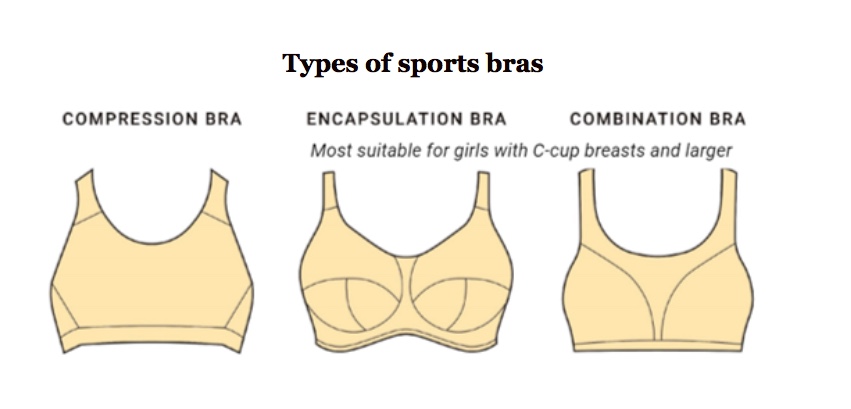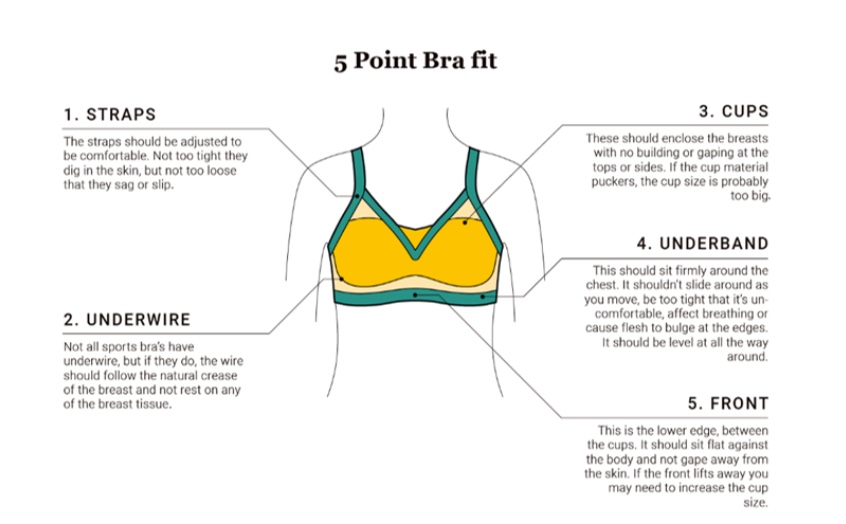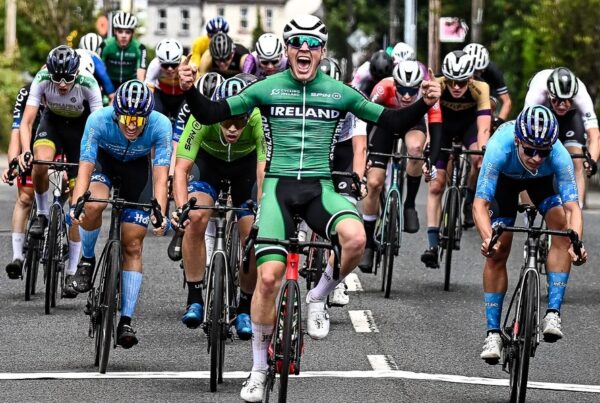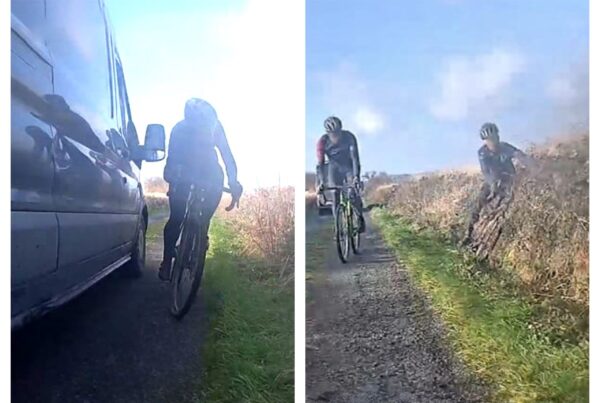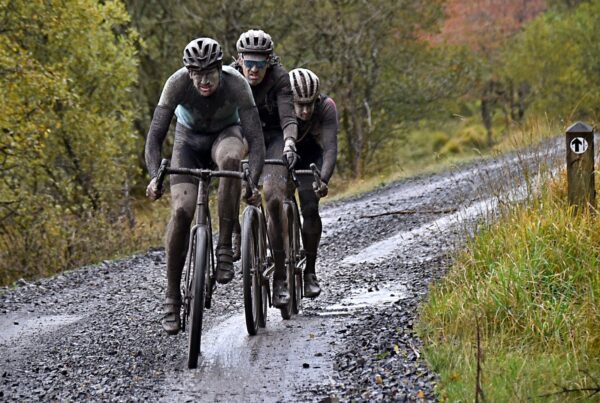A poorly fitting sports bra can have consequences for health, including:
- Breast pain
- Skin damage
- Poor posture Musculoskeletal problems
- Nerve impingement
It can also impact sporting performance by:
- Increasing breast motion which causes discomfort
- Making exercise feel harder Decreasing stride length during running
- Increasing muscle activity in upper body, which uses more energy
- Reducing breathing frequency Preventing correct upper body movement during sport
All of this can add up to a 4% decrease in performance!
No one sports bra will suit ALL women – the right design for you will be a combination of your breast size and the type of activity you do.
Types of sports bras:
- Compression Bra: A crop-top style bra which squashes the breast tissue against the chest to reduce movement. Research promotes use of this style for smaller-breasted (smaller than D cup) women only.
- Encapsulation Bra: Supports each breast separately, can include an underwire, often fastens at back, with fully adjustable straps. Research promotes use of this style for larger-breasted (larger than D cup) women to reduce movement and discomfort.
- Combination Bra: Incorporates both encapsulation and compression elements. It has 2 separate cups with an external layer compressing the breasts.
The 5 point bra fit:
It is important to take into account the fit of your straps, cups, underband, centre front of bra and underwires to ensure you have the perfect fit.
- Straps: the straps should be adjusted to be comfortable. Not so tight that they dig into the skin or so loose that they sag or slip.
- Cups: these should enclose the breast with no bulging or gaping at the tops or sides. If the material puckers the cup size is probably too big
- Underband: this should sit firmly around the chest. It shouldn’t slide around as you move, be so tight that it’s uncomfortable, affect breathing or cause flesh to bulge at the edges. It should be level all the way around
- Front: this is the lower edge between the cups. It should sit flat against the body and not gape away from the skin. If the front lifts away you may need to increase the cup size
- Underwire: not all sports bras have underwire but if they do they should follow the natural crease of the breast and not rest on any breast tissue.
Girls, breasts & exercise:
- 46% of girls avoid physical activity because of their breasts.
- 73% of girls have specific concerns over breasts and exercise, like breast bounce and embarrassment
- 50% of girls don’t wear a sports bra (which can reduce breast bounce, breast pain and embarrassment)
- 90% of girls want to know more about breast health and breast support.
The modern day sports bra began life as a jockstrap:
It was the summer of 1977 and Lisa Lindahl, a University of Vermont graduate student, was swept up in the running boom, jogging 30 miles every week.
The running was straightforward. Her underwear was not.
“The only uncomfortable part was no adequate breast support,” she said.
Lindahl, then 28, tried binding herself with an elastic bandage, and going braless, before eventually settling on a regular bra, one size too small. The struggle for chest support fed a running joke with her sister: why isn’t there a jockstrap for women?
Lindahl started to take the idea seriously early on. She enlisted her best friend, Polly Palmer Smith, who was working as a costume designer for a Shakespeare Festival in Burlington, Vermont. They were soon joined by Hinda Miller, also a costume designer, and Smith’s assistant that summer.
The women set up shop in Lindahl’s living room, playing with fabrics and fits. Miller would craft a prototype, and Lindahl would go for a run in it and see how much she “bounced”. “Nothing was working,” she said.
That was, until Lindahl’s husband came down the stairs with a jockstrap pulled around his chest, presenting the women with their “jock bra”.
Once the three women had a working design – crossed straps and seams on the outside – they filed a patent and started Jogbra Inc.
Using a $5,000 loan from Miller’s father, the two women commissioned the first 60-dozen batch of Jogbras and began approaching sports stores. Their product was a piece of sports equipment, not lingerie, Miller said. But speaking to store owners and managers – mostly male – “we would be laughed out,” Lindahl said. “Almost every time they’d say ‘we don’t sell bras in our store.’”
So they tried another route, approaching the assistant store managers – mostly female – and giving them a Jogbra sample to try.
They packaged the Jogbra in a subtle black box and swapped out the complex cup sizing of regular bras for a more simple small, medium and large.
It worked. The very first Jogbra hit the market in 1978, priced at $16 a piece.
They started to put out ads in running magazines with Lindahl and Miller acting as models, as they couldn’t afford anyone else. Their slogan was: “No man-made sporting bra can touch it.”
Useful Resources:
- Find your Sports Bra Size Quiz, a quick and easy way to find your suggested Sports Bra Size:
- Free Bra Fitting e-book:
- BoobyDoo has an excellent range of resources and great sports bras:
- Treasure your Chest provide great resources for teachers:
- Limitless is a bra which has been thoughtfully designed with the developing breast in mind
- This video from The University of Portsmouth Breast Health Research Group talks you through the 5-point fit
- Women’s Cycling Coach: Brendan Whelan
- Women’s Coaching Archive
The post Breast support in sport – getting it right: appeared first on Irish Women’s Cycling .


